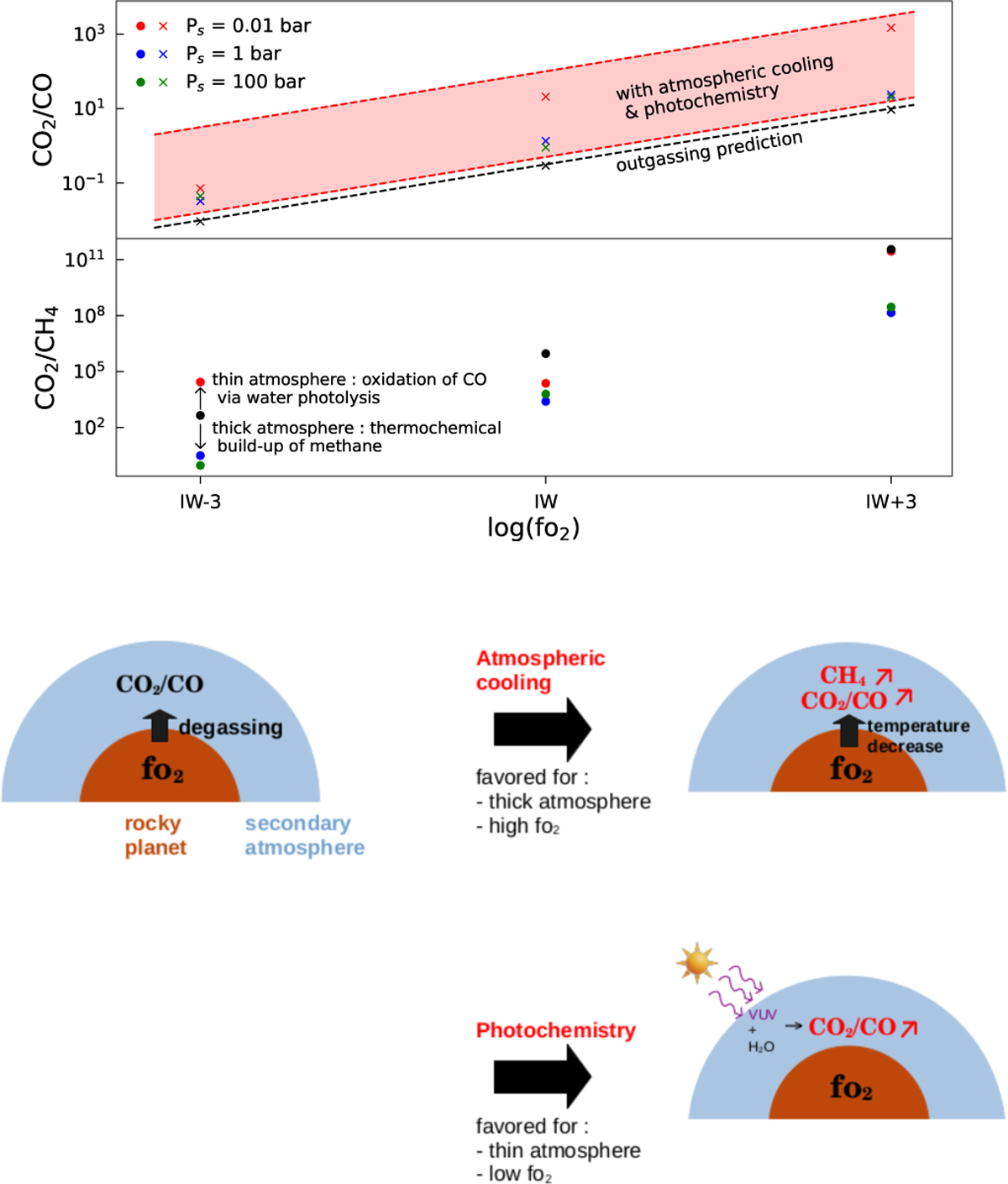Fig. 9

Download original image
Impact of atmospheric cooling (thermochemical cooling) and photochemistry on the relative molecular abundances, namely, CO2/CO and CO2/CH4, used as atmospheric tracers for the interior fo2. (Top) Relative molecular abundances CO2/CO and CO2/CH4 at the quench point for different end-member cases of Ps and fo2 (see Table 2). The black marker shows the prediction by outgassing alone and the colored markers show the prediction including atmospheric chemistry. (Bottom) Schematic summarizing the main atmospheric processes affecting CO2/CO and methane buildup. The terms “thick” and “thin” atmospheres are used respectively to mark the transition from a regime dominated by thermochemistry toward a regime dominated by photochemistry. This transition is not quantified using pressure ranges as other variables must be considered including orbital distance and O/H (see Sect. 4.2).
Current usage metrics show cumulative count of Article Views (full-text article views including HTML views, PDF and ePub downloads, according to the available data) and Abstracts Views on Vision4Press platform.
Data correspond to usage on the plateform after 2015. The current usage metrics is available 48-96 hours after online publication and is updated daily on week days.
Initial download of the metrics may take a while.


